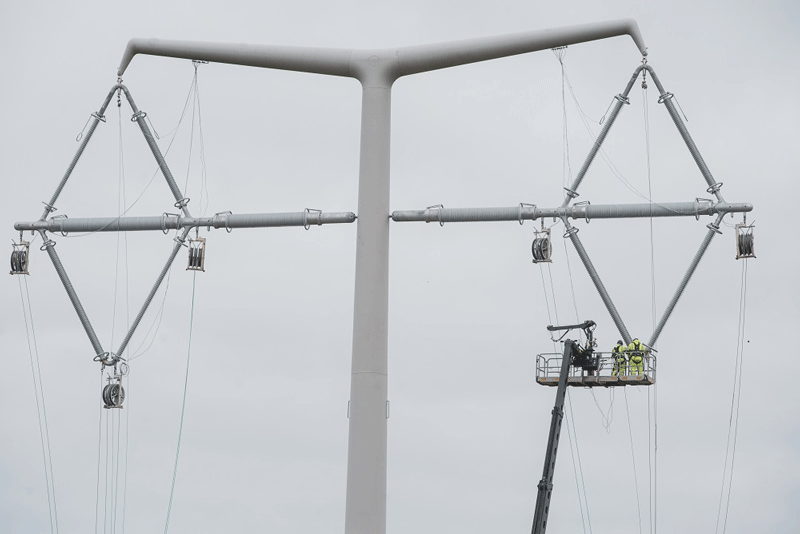'World's first' T-pylon built in Somerset
National Grid has built what they say is the world’s first T-pylon, the first new design for an electricity pylon in Great Britain for nearly a century, in Somerset.

It will be one of 116 T-pylons along a 57km route, connecting low carbon energy to six million UK homes and businesses. The T-pylons have a single pole and T-shaped cross arms which hold the wires in a diamond ‘earring’ shape. They are 35 metres high, a third shorter than National Grid’s traditional lattice pylons, and have a smaller footprint using less land.
The new pylons form part of the National Grid’s Hinkley Connection project, a £900m investment to connect low carbon electricity from Hinkley Point C Nuclear power station. They will run between Bridgwater and Portbury, other than through the Mendip Hills AONB where the new connection goes underground. The project also includes the removal of 249 electricity pylons between Bridgwater and Avonmouth.
The new pylon design was selected from over 250 designs entered into an international competition run in 2011, organised by the Royal Institute of British Architects and government. The competition sought a new design to reduce impact on the local environment and surroundings.
T-pylons form part of a suite of technologies used by National Grid to mitigate the impact of electricity infrastructure, including alternative lattice pylon designs and different types of underground and subsea cable systems. The appropriate approach for each new development or upgrade is assessed on a case-by-case basis, with each technology used based where it is operationally possible and cost efficient for electricity consumers. Currently there are no other planned sections of T pylons.
Construction of the first 48 T-pylons by Balfour Beatty on behalf of National Grid began last week near East Huntspill, with each pylon taking roughly 5 days to build. Construction of the remaining 68 pylons, north of Sandford will begin in 2022.
Chris Bennett, Acting President, National Grid Electricity Transmission says, ‘We are always looking for innovative new ways to mitigate the impact of our infrastructure on the natural environment and projects such as T-pylons are a great example.
‘This new design forms part of our significant investment in the network in England and Wales, adding capacity onto the grid to deliver increasing amounts of low carbon energy and support the UK’s drive towards its net zero target.’
The Hinkley Connection project will be ready to connect to Hinkley Point C by the end of 2024, with the project complete at the end of 2025.

